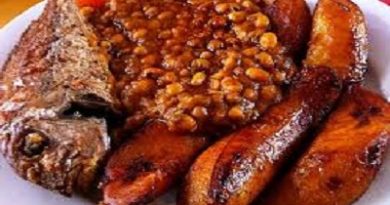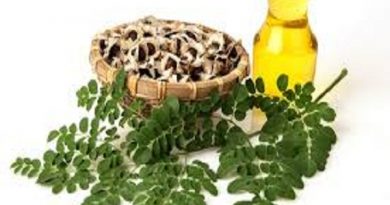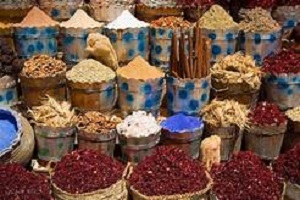Tuo Zaafi: How to Make the Best Tuo Zaafi from Scratch
Tuo zaafi also known as T.Z or Saakbo, is a popular Northern Ghanaian dish. It is not only common in Ghana but also across some parts of West Africa, especially in countries like Nigeria, Mali, Burkina Faso, and Niger.

Tuo Zaafi Origin
Tuo Zaafi has its origins in the Hausa language. The word “Tuo” means stirring or paddling, while the word “Zaafi” means hot.
Types of Tuo Zaafi
The type depends on the flour used in the making. The three main types are corn, millet, and red millet and besides these types, we have the ones that you either can add corn dough or cassava flour these types are very popular among the Kotokolies and Chambas.
Tuo zaafi Calories
Tz is soft naturally and a little sticky when felt between the hands. The serving size of 200 g contains 720 calories-165 carbs, 1g fat, and 10 g protein.
It is normally eaten with any soup of choice, but the most common soup associated with Tuo Zaafi is ‘ayoyoyo’ or dry okra which is also known as ‘kubewa busheshe’.
Recipe
Tz consists of 3 separate dishes, which are combined for the final dish – the meat stew, the ayoyo sauce, and the tuo zaafi itself.
Tuo zaafi Ingredients
- (Exclusive of items for goat meat stew which is you can find here)
- A bunch of fresh ayoyo leaves. The alternative is a frozen pack of ayoyo leaves (also known as jute or ewedu leaves)
- 1 cup Cassava flour
- A cup of corn flour
- Herrings or other smoked fish
- Salt to taste
Method: Follow the Three Steps Below;
Step A – To prepare goat meat stew please read~
Goat Meat Stew: How to Make Nigerian Spicy Stew
Step B – Make the Ayoyo Sauce
- Firstly, carefully wash the ayoyo leaves and chop them into tiny pieces (if using fresh leaves), or if using frozen ones, allow them to defrost or defrost in a microwave.
- Secondly, put 1 cup of water in a pot, place it on the stove, and turn the heat to high until it starts boiling. Then lower the heat to medium.
- Thirdly, add the ayoyo to the boiling water and stir periodically with a wooden pestle until the leaves break up in the water, and start to froth and bubble.
- As preferred you can add smoked or dried herrings and salt to the ayoyo for additional flavor.
- Lastly, lower the heat to low and continue to stir for another 10 minutes. Then turn off the heat, and set aside the ayoyo mix till you’re ready to serve.
Step C – Make the tuo zaafi
- Firstly, put 2 cups of water in a pot until it is boiling.
- Secondly, scoop 1 cup of cornflour and mix with cold water. Stir thoroughly until the mixture is consistent.
- Then, add the mixture to the boiling water and stir with a wooden pestle, taking care to avoid any lumps.
- Thirdly, once fully mixed, leave it to boil for ~8 to 10 minutes. Then scoop out about a third of the mixture to use later.
- After that, add the remainder of the corn flour to the boiling porridge mixture, and stir with the wooden pestle as the mixture gradually solidifies.
- Then, add the flour little by little and continue to stir. As needed, add the set-aside mixture to the pot to keep the mixture moist at all times. The goal is to avoid lumps.
- Lastly, after stirring for 20-30 minutes, the tuo should be ready. Scoop a bit and mold into somewhat round shapes, or directly into the serving dishes.
Serve and Enjoy!
FAQs
Tuo Zaafi is made of what?
It is typically made with maize flour or millet flour, and it is soft and slightly sticky when pressed between the hands.
It is typically served with any soup, but okrosoup is the most common.
What does Tuo Zaafi mean?
Tuo zaafi is a Northern Ghanaian dish made by cooking maize or millet flour with water.
Where Tuo means stirred in Hausa, while zaafi means hot. Tuo zaafi is a sticky, starchy, carbohydrate-rich dish that is traditionally served with okra soup.
Tuo Zaafi is from where?
Ghana
Sao or Tuo Zaafi in the local dialect, which is often abbreviated TZ or T-Zed in English, is the staple food of the people of northern Ghana.
Sao translates to “very hot tuo” in Hausa. It is a thick porridge made of corn flour that is eaten by tearing off a chunk and dipping it into an okra soup.
Which tribe consumes Tuo Zaafi?
Today, it is common to walk into a Ga community and see households pounding fufu (a traditional Asante and Akyem dish) for supper.
Another food that has progressed from ethnic to national status is the ever-popular Tuo Zaafi, also known as TZ in the southern part of Ghana.
What is Omo Tuo’s English name?
rice balls
Omo tuo (Twi: ɛmo tuo; “rice balls”) is a rice-based Ghanaian staple. The term “broken rice” refers to long-grain rice that has been broken into smaller pieces.
How to prepare for Zaafi ~ Steps to Tuo Zaafi Recipe
- Firstly, bring enough water to a boil, and then add the corn flour and cook for 5 to 10 minutes.
- Meanwhile, fill a separate bowl with some of the solutions you made earlier.
- After that, mix the dry corn dough and cassava dough together and gradually add them to the boiling corn.
- Lastly, to avoid lumps, stir continuously and thoroughly until it’s done
What is Kokonte English?
The delicacy is known as “brown fufu” in English. It is very similar to tapioca, a popular Brazilian dish that is also popular in the Volta Region of Ghana.
It’s a simple dish made from dried and pounded cassava, also known as manioc root, that takes on a brown appearance once cooked.
Is Tuo Zaafi healthy?
It is a healthy dish that can be found in Ghana.
Tz, which is mostly eaten in Ghana’s northern region, is also very nutritious and easy to digest.
In Ghana, what is Kenkey?
Kenkey is a traditional Ghanaian dish made from fermented white corn that is popular among the Ga people of southern Ghana.
Tuo Zaafi Recipe According to Sweet Adjeley, how to prepare for Zaafi
Preparation Steps
- Bring enough water to a boil, then add the corn flour and cook for 5 to 10 minutes.
- Get some of the previously created solutions and then mix the dry corn dough and cassava dough together and gradually add it to the boiling corn.
- To avoid lumps, stir continuously and thoroughly (Please check the above recipe)
Zaafi Tuo flour
TZ is typically made with maize flour or millet flour, and it is soft and slightly sticky when pressed between the hands.
It is typically served with any soup, but okrosoup is the most common.
It should be noted that Ghanaians eat primarily with their hands, without the use of a fork or knife.
Ingredients of Tuo Zaafi ~ what is Tuo Zaafi made of?
TZ is typically made with maize flour or millet flour, and it is soft and slightly sticky when pressed between the hands.
It is typically served with any soup, but okrasoup is the most common.
Which tribe eats Tuo Zaafi?
Today, it is common to walk into a Ga community and see households pounding fufu (a traditional Asante and Akyem dish) for supper.
Another food that has progressed from ethnic to national status is the ever-popular Tuo Zaafi, also known as TZ in Ghana’s southern region.
Tuo Zaafi benefits
TZ comes with a lot of Health advantages
It contains vitamin B6 for a healthy body and brain, vitamin B12 for healthy blood cells, thiamin (helps with metabolism, muscle contraction, etc), riboflavin (helps with protein, fat, and carbohydrate breakdown), and niacin (lowers cholesterol, eases arthritis), all of which are powerful vitamins among others
TZ soup ~ Ayoyo soup Recipe
How do you make Ayoyo soup?
- To begin, combine Ayoyo leaves, water, African locust beans, and salt in a saucepan and bring to a boil.
- Then, remove from the heat, transfer to a food processor, and pulse for 10 seconds.
- Ayoyo soup is ready to eat. Serve with TZ and beef stew.
What is the English name for Ayoyo?
Jute leaves are known by many different names depending on where you live, including ewedu, ayoyo, etc.
Jute leaves have a bitter taste, which varies depending on how old they are.
Is Ayoyo and ewedu the same?
Leaf, as the Yorubas call it, Achingbara in Igbo, Ayoyo in Hausa, and Jute leaves in English all refer to the same plant, Corchorus Olitorius.
It is a green leafy edible vegetable used to make the delicious slimy ewedu soup.
Tuo zaafi pronunciation
TUO ZAAFI, also known as TZ (pronounced Tee•Zet). Rice Flour with Jute Leaves, Tomato Stew, Chicken, and Lamb


